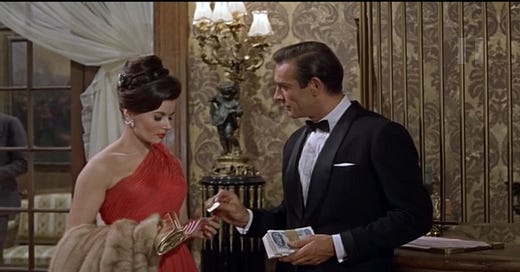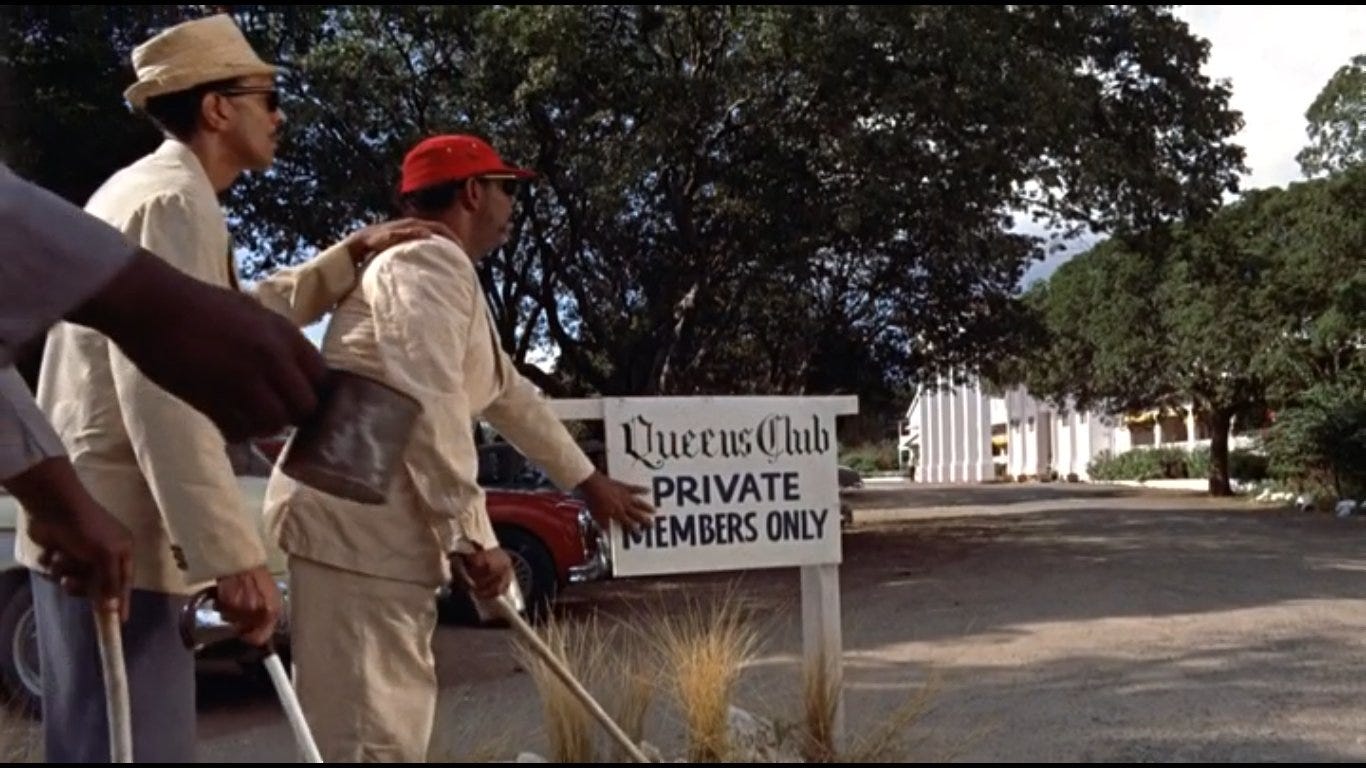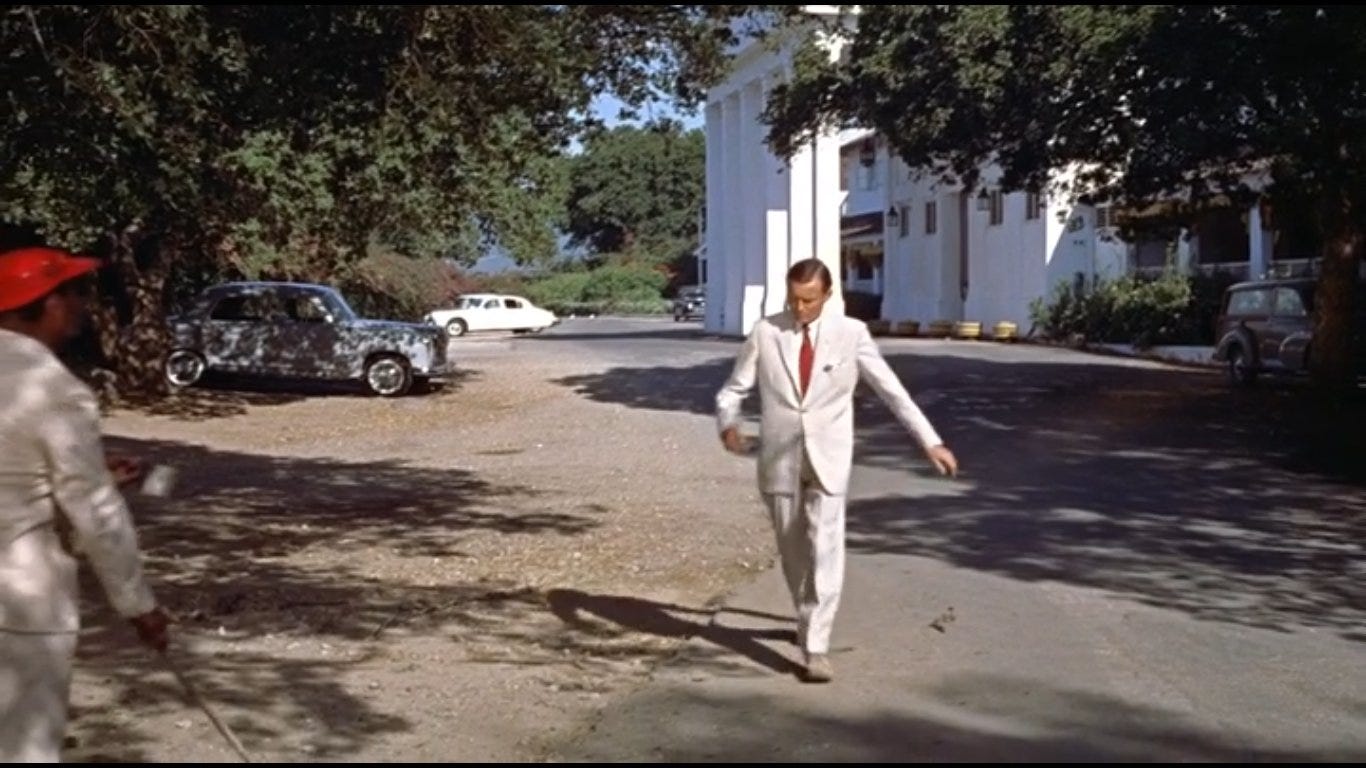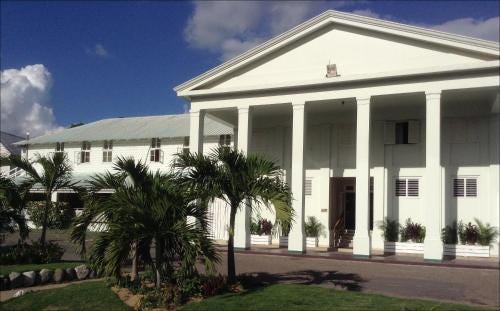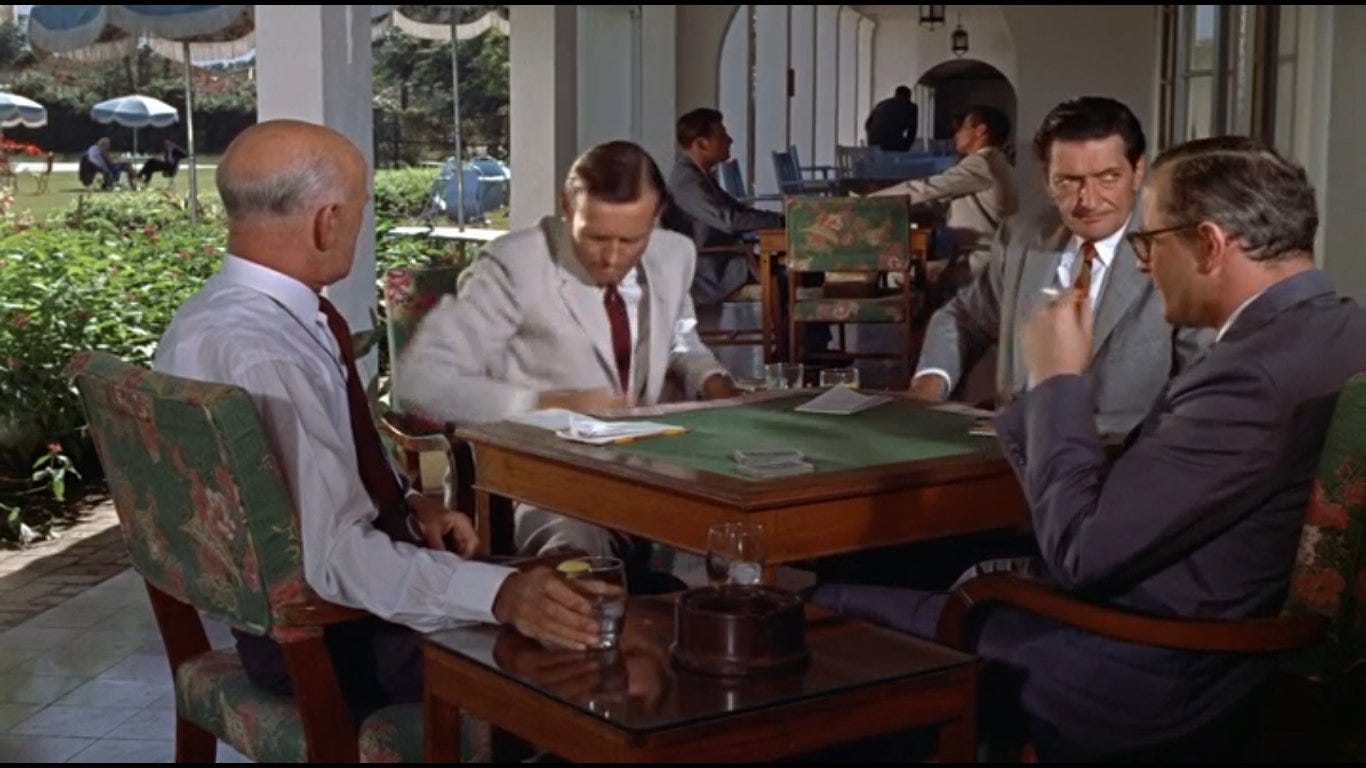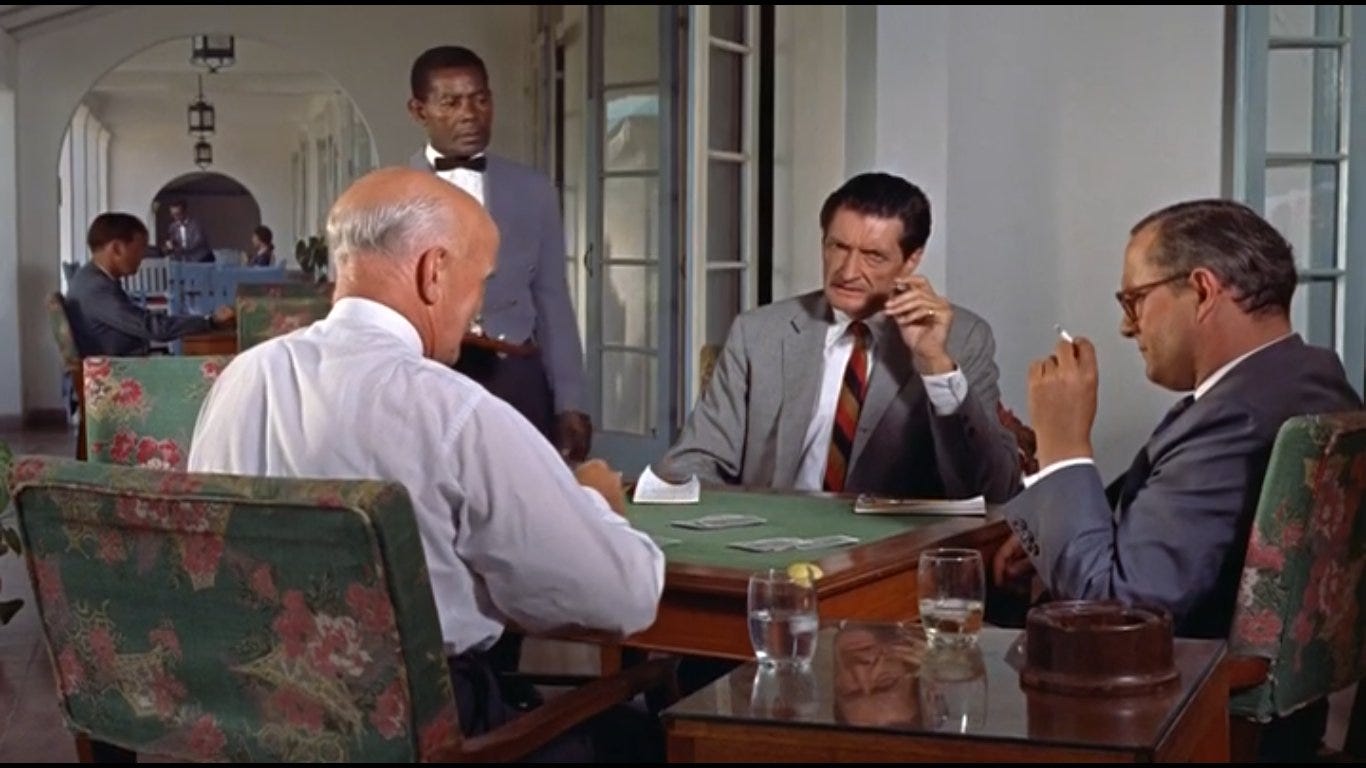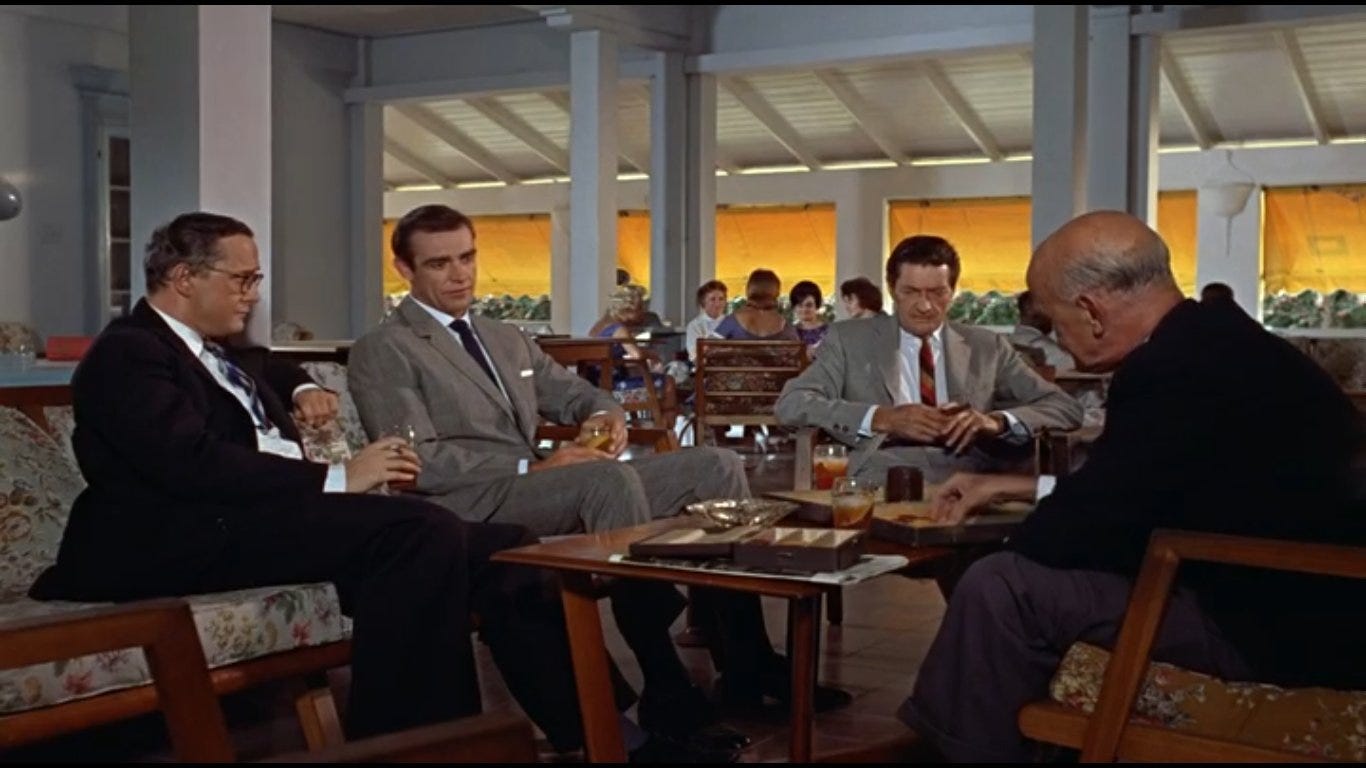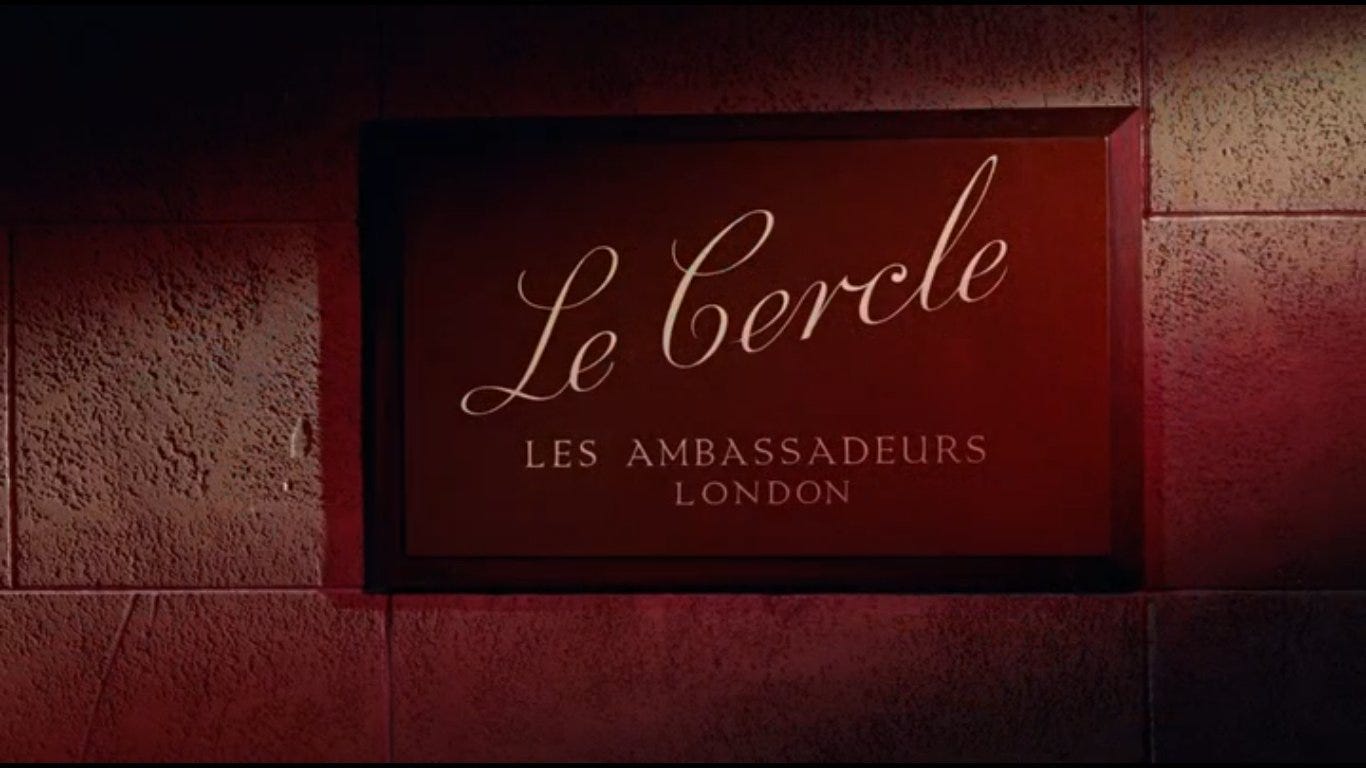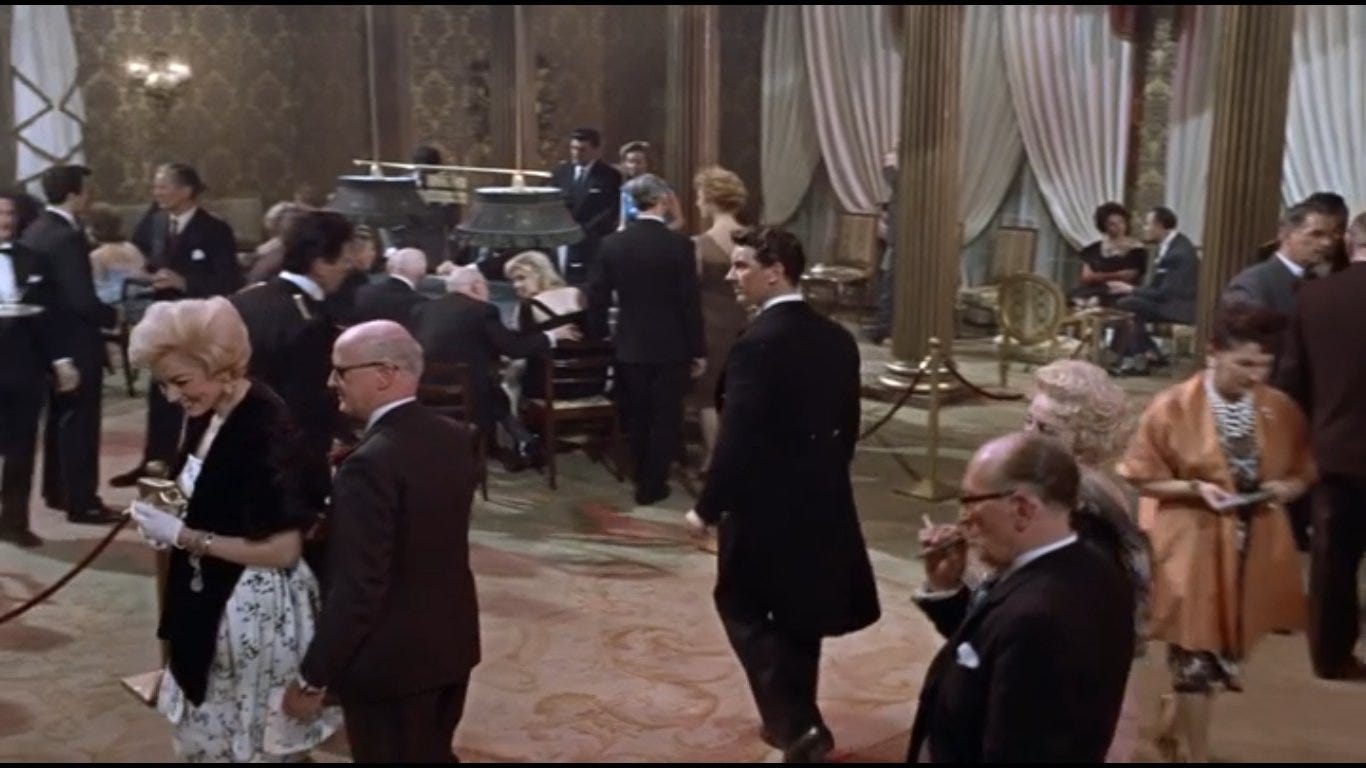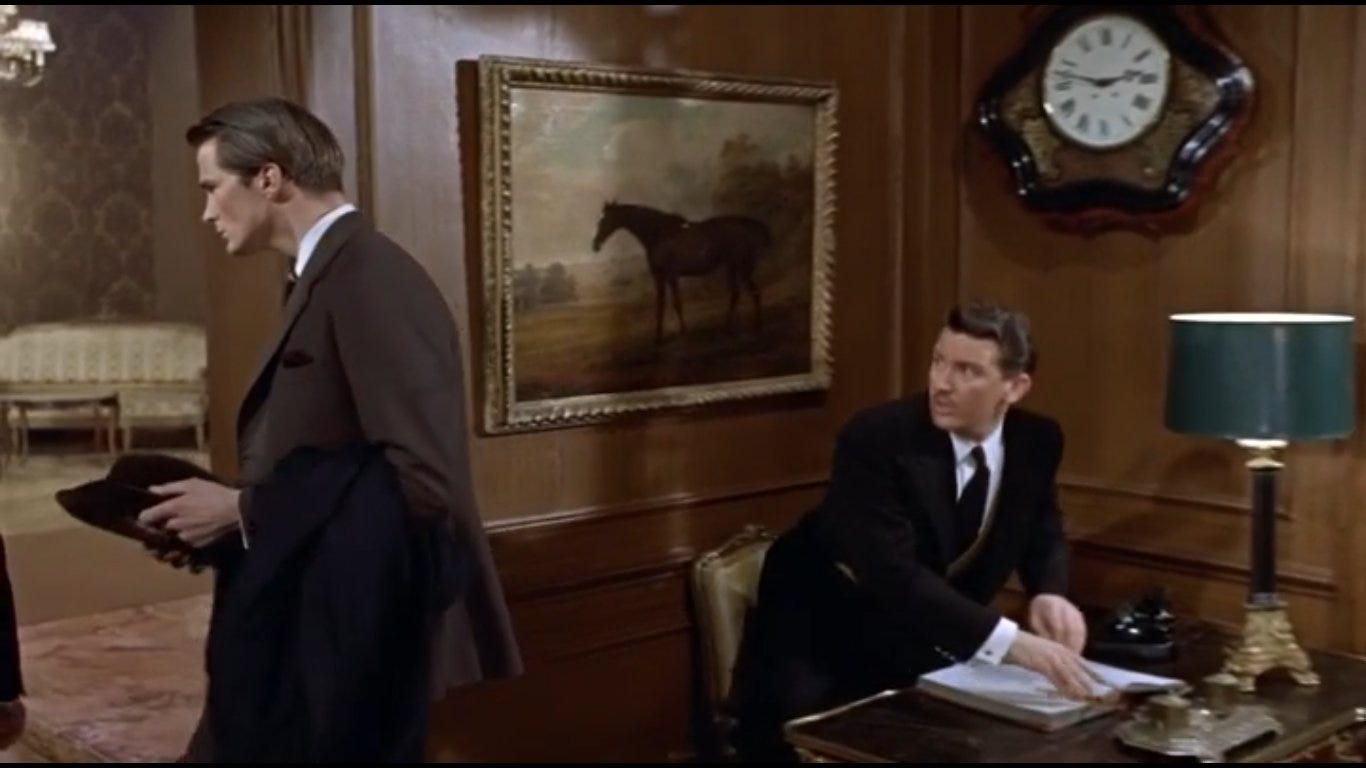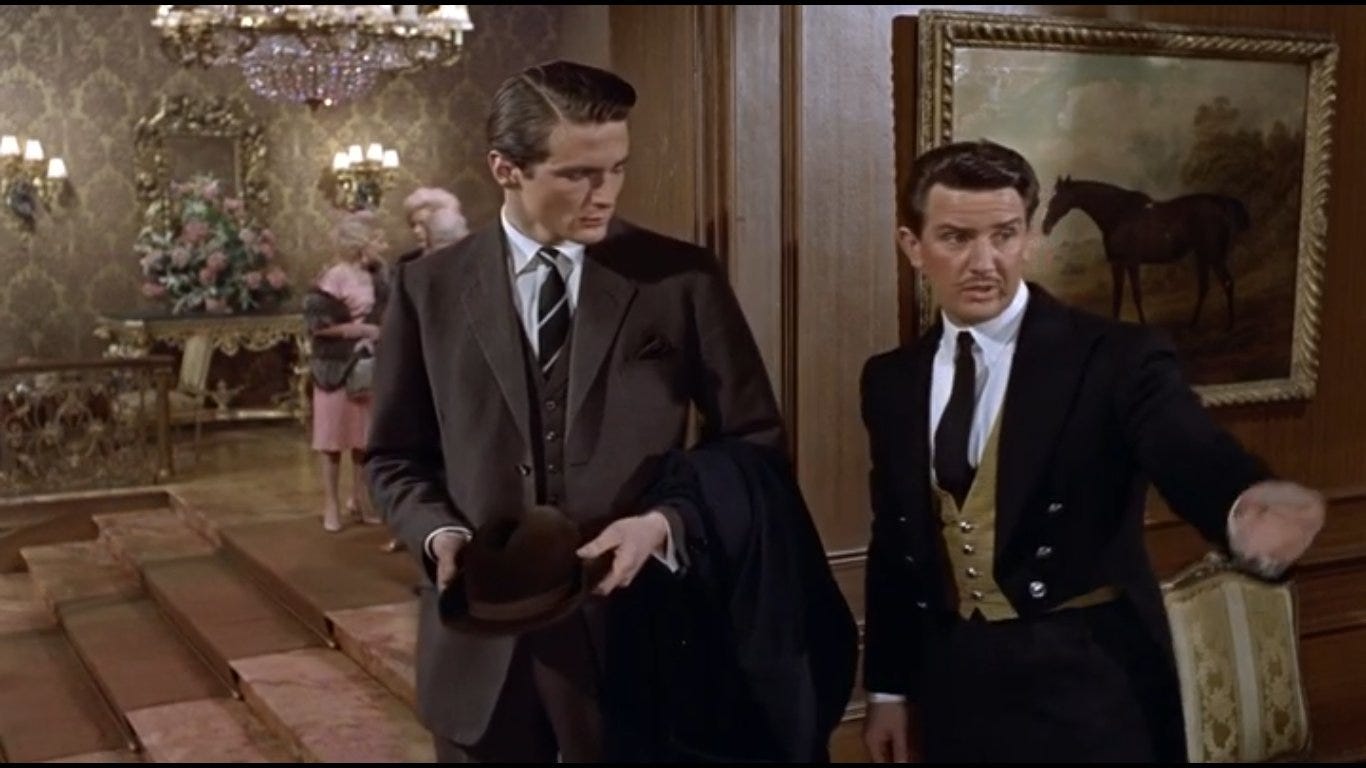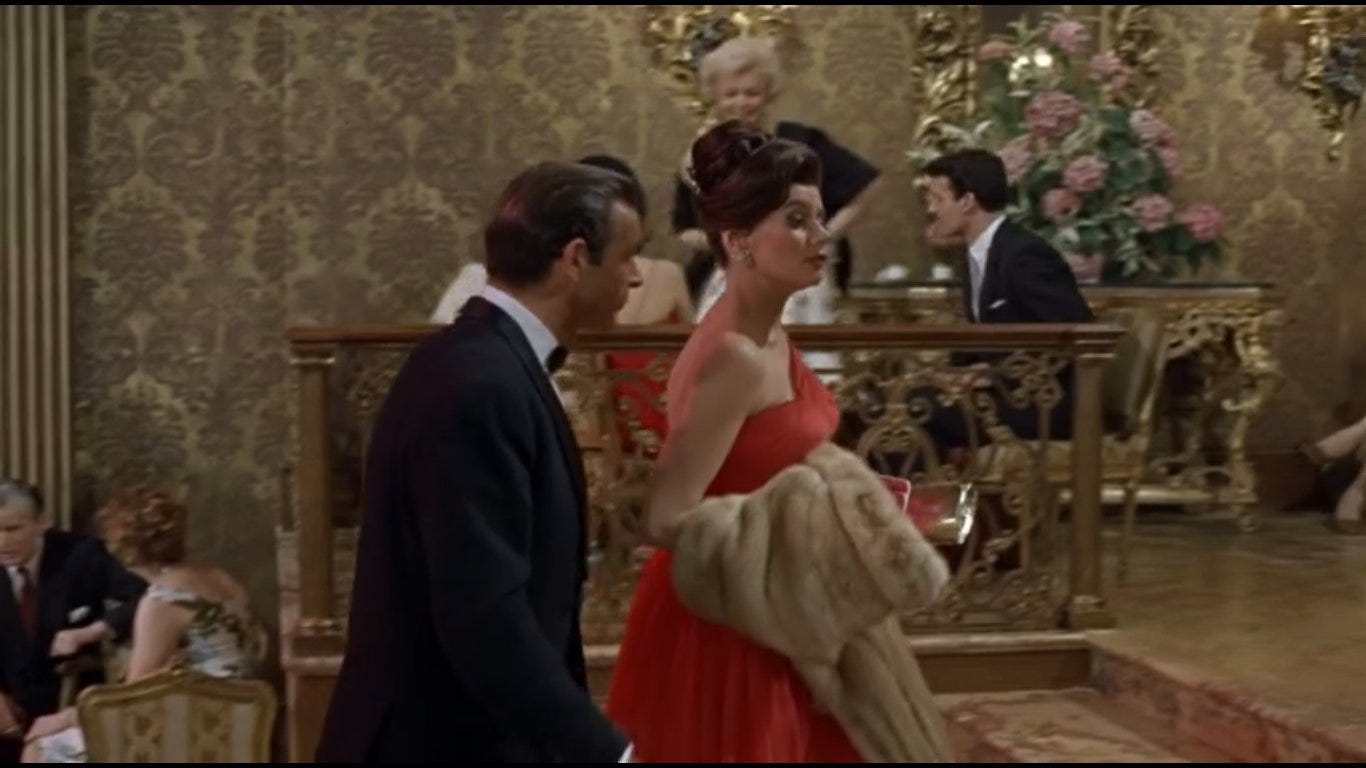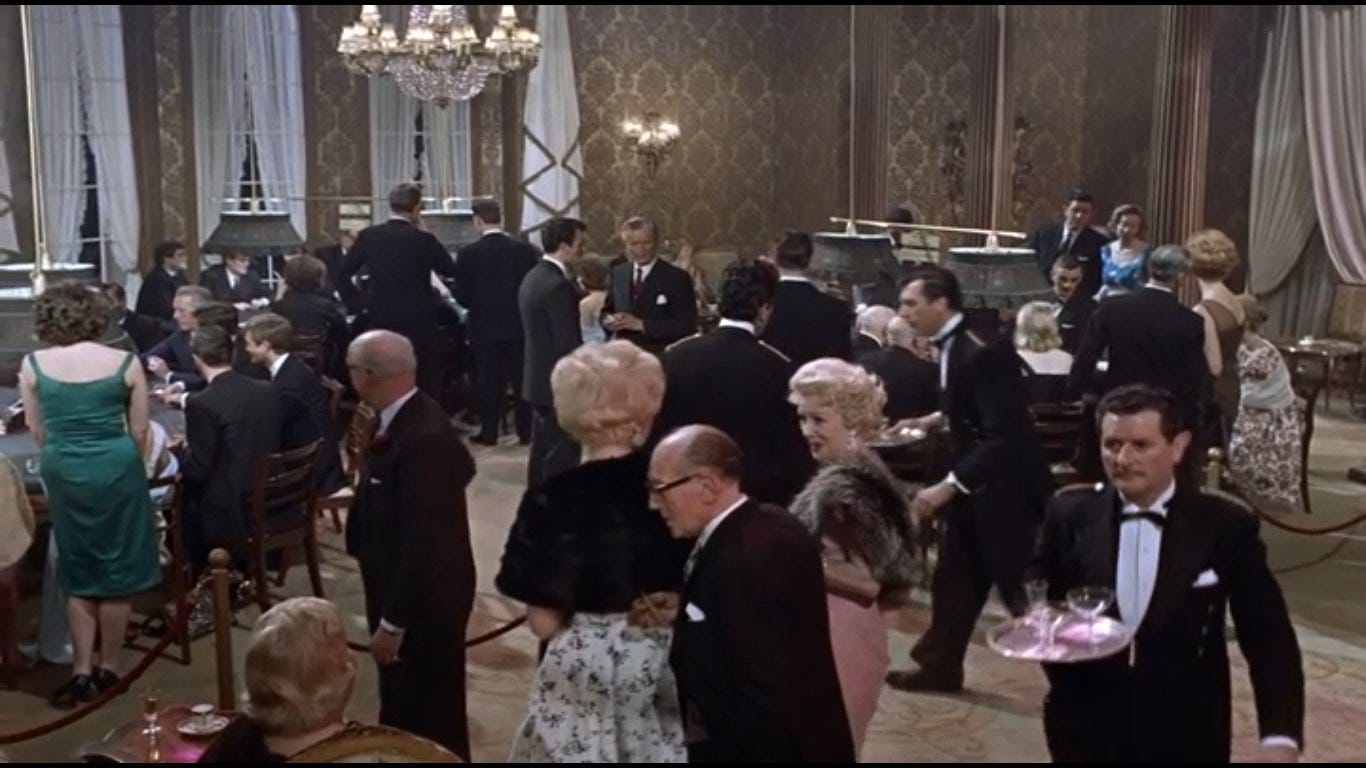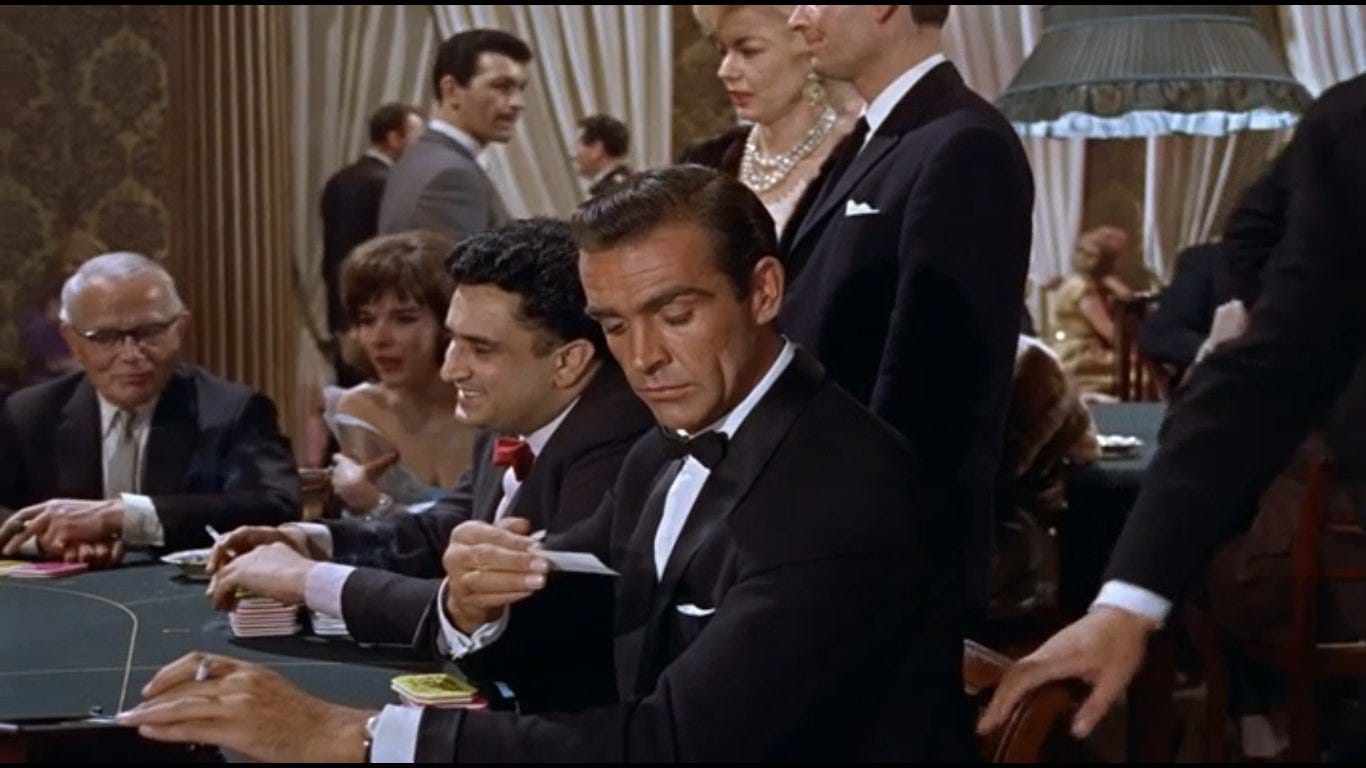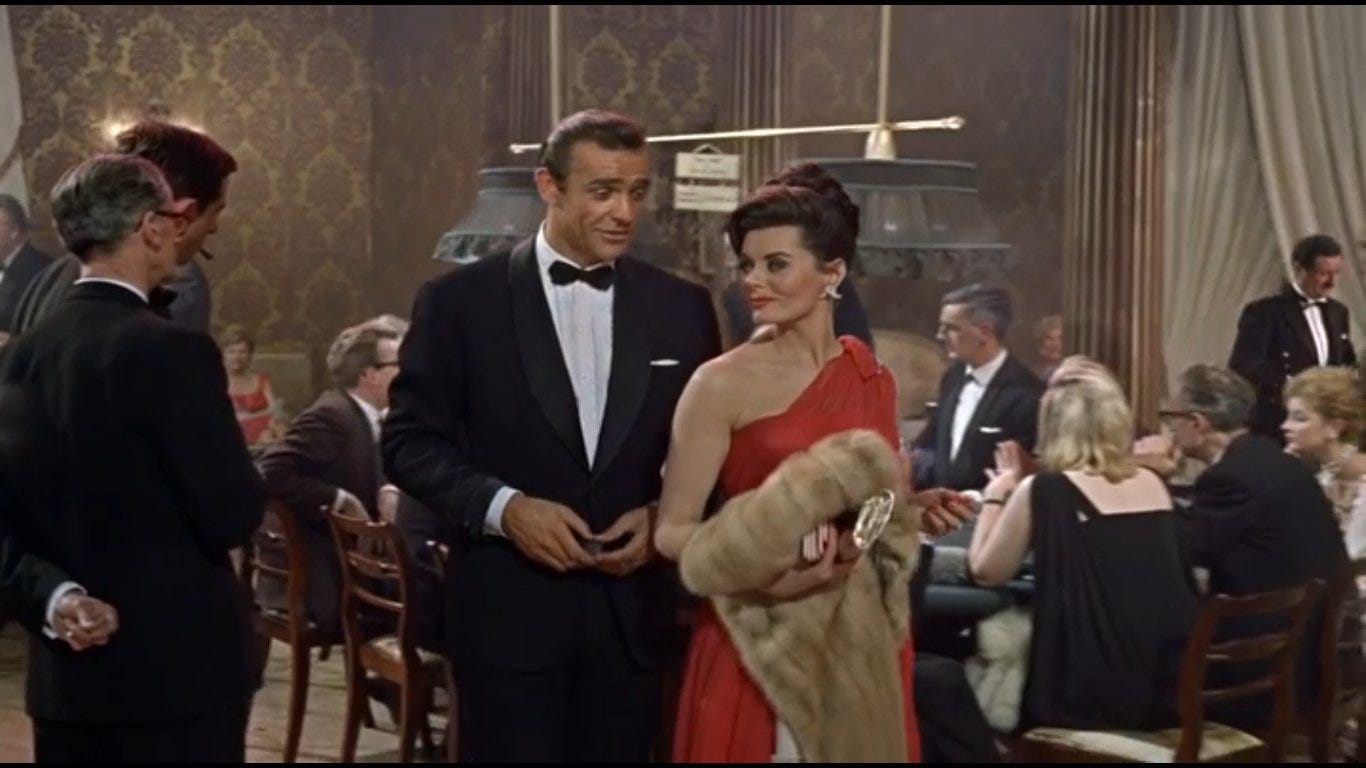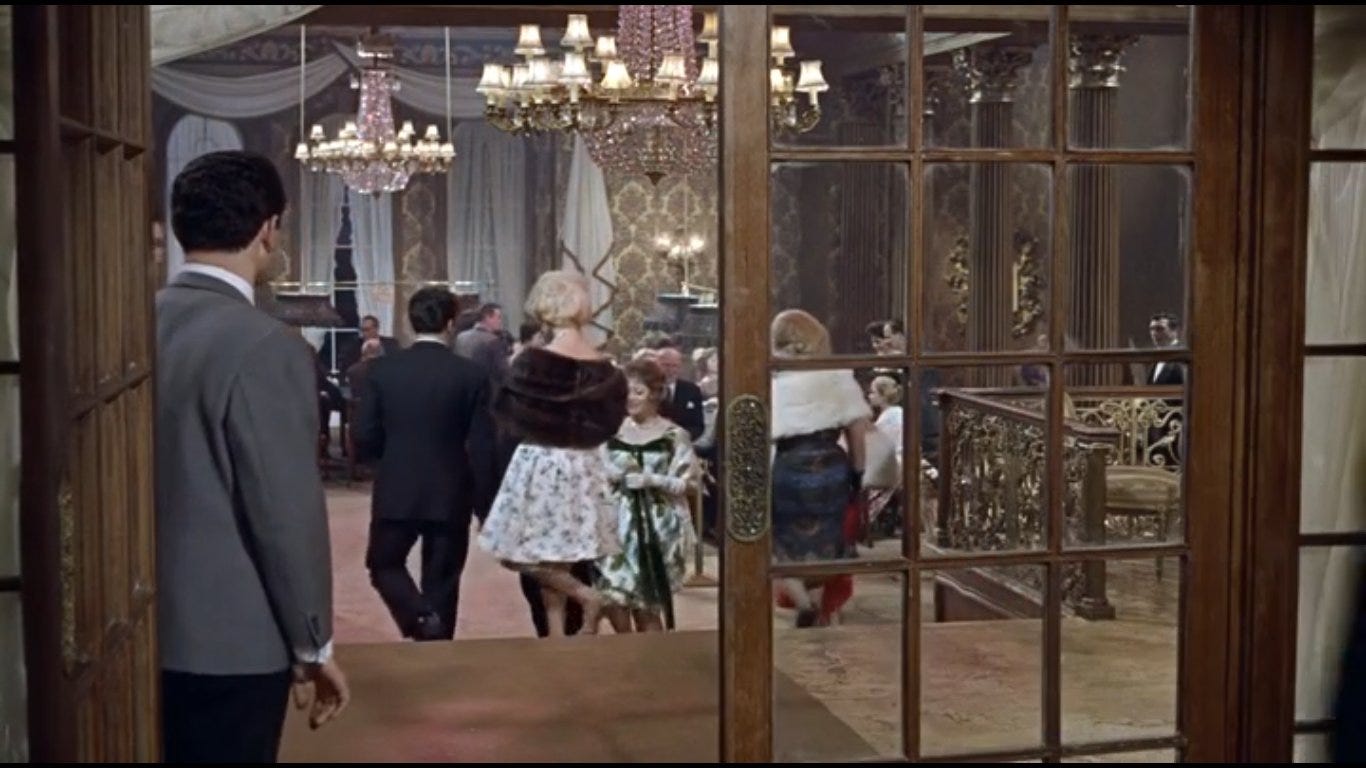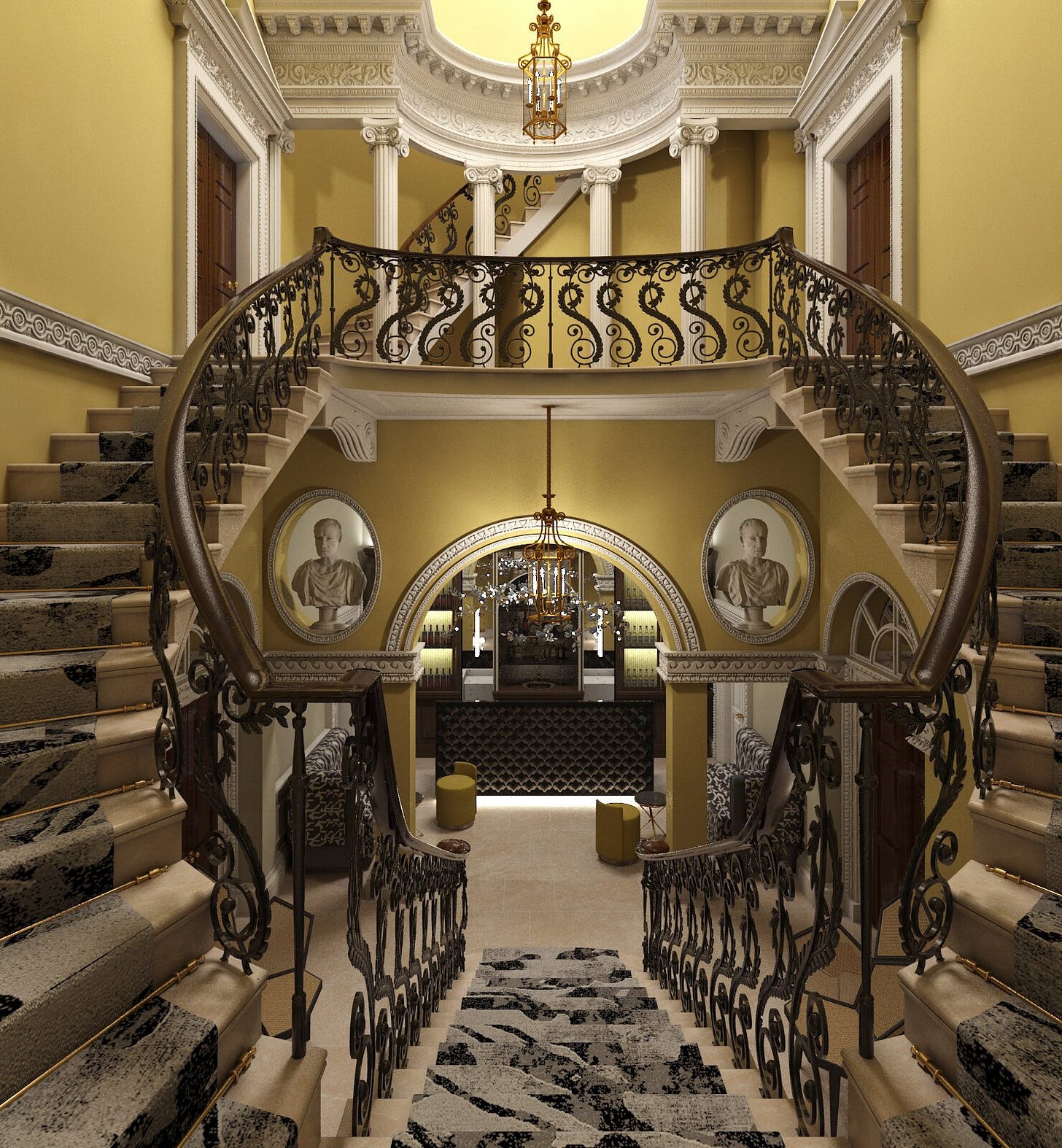Today’s post looks at the ways that two very different private members’ clubs are presented in the first James Bond film, Dr. No (1962). Lest you think this is tangential, Dr. No literally starts with three assassins turning up at a private members’ club, with the opening shot centring on a sign informing us that it is for “Members only.”
Clubs were an essential backdrop to the original James Bond novels. M's club, Blades, recurred in several books - beginning with Moonraker (1955) - and it was clearly based on Fleming's own club, Boodle’s. But the film version of Dr. No shows us two very different clubs, at home and abroad.
The Queen’s Club
The fictional Queen's Club in Kingston, Jamaica, seen in Dr. No, was closely based (in both the book and the film) on the real-life Liguanea Club - which was also used as the filming location. It is a real-life club which is still going today - and its bedrooms can be booked by non-members, through booking.com. Fleming knew the Club as a long-term resident of Jamaica, who had first visited the island since 1942, and had wintered there for three months every year since 1945.
The Liguanea Club was founded in 1910, and it followed the sports club model that was popular across British colonies, with the sizeable surrounding grounds offering squash courts, tennis courts, and a swimming pool.
The Liguanea Club in Kingston, Jamaica, today. (Photo credit: Liguanea Club website.)
Colonial clubs like the Liguanea were a major component of British imperial rule - which formed a backdrop to the movie. At the time that Dr. No was filmed between January and March 1962, Jamaica was still run as a British colony, with independence looming on the horizon - it became independent in August 1962, two months before the film’s release.
The Liguanea Club today. On the left is a veranda - though the one used as a filming location in the film was the rear veranda, overlooking the tennis courts and gardens. On the right-hand side of the car park is the area where the assassins enter, and later shoot Strangways before escaping. (Photo credit: Liguanea Club facebook page.)
The British colonial world was was extremely small, both in terms of the small number of white British colonists making up a percentage of the population; and small in the physical space they occupied, typically a limited part of each town. In this setting, the club functioned as a secure compound, with reminders of home - essential to empire.
When the film opens, four members have been playing bridge on the veranda. The shooting script describes them thus:
“JOHN STRANGWAYS, R.N. (ret.) Caribbean Universal Exports Agent, or, less discreetly, the local representative of the British Secret Service. He is a tall, lean man with a black patch over his right eye, and the sort of acquiline good looks associated with the bridge of a destroyer; PLEYDELL-SMITH, the Colonial Secretary, a youngish, shaggy-haired man with bright boyish eyes, enthusiastic and energetic; PROFESSOR DENT, forty, distinguished-looking - a metallurgist by profession; and POTTER, a recently-arrived business man from London.”
Verandas like the one on which they are playing were common in colonial clubs: Europeans were unaccustomed to tropical climates, so colonial club life revolved around indoor fans & outdoor verandas.
Note the creature comforts on display just in the one shot seen above: card tables, parasols, ashtrays, G&Ts, upholstered chairs: all manifestations of colonial luxury. A lot has been written about the literary Bond was a reaction to the loss of the British Empire. But this is also literally how the film series started, in its opening scene.
A clearer view of the structure of the rear veranda looking over the sports fields behind the Queen's Club/Liguenea Club.
Next, we see Professor Dent ringing a bell, and then a waiter promptly appears.
It is very much presented as a last gasp of empire: white members with non-white servants at their beck and call would not have attracted comment in a colonial-era club - but would very much have done so only a short time later.
The codes of etiquette in and around the Queen’s Club is strong. When Bond wants to quiz Strangways’ club acquantances, he says, “I want to meet them socially,” and is told, “I can introduce you at the club tonight.” The club regulates relationships in this way. The meeting happens just indoors from the veranda - note the architecture, to maximise easy ventilation, even indoors.
Incidentally, Clubland Substack reader Philipp Hass recently visited the Linguanea Club in Kingston, and took the below photos, showing the building to be almost unchanged today. Its Dr. No appearance is commemorated with a framed photo.
The Liguanea Club, photographed in 2025. (Photo credit: Philipp Hass.)
Les Ambassadeurs
We then move onto one of the most iconic scenes in the whole Bond series: our first introduction to James Bond. This is, of course, set in another private members’ club, albeit one of a very different kind: Le Cercle, at Les Ambassadeurs.
While the Queen’s Club was a thinly-veiled fictionalisation of a real-life club, Les Ambassadeurs was - and is - a real-life club, based around a casino. It had been operating since 1941; and since 1950 it has been located at its current address of 5 Hamilton Place in Mayfair.
Unlike the Queen’s Club’s use of a real-life club location, Les Ambassadeurs is represented with studio sets, shot at Pinewood.
The setting is significant. The shooting script carries this description:
“A large high-ceilinged rococo room crowded with obvious cafe society. Most of the MEN are in dinner jackets. The WOMEN in evening gowns. The chemin-de-fer tables are full and surrounded by ONLOOKERS. There is a glitter of expensive jewellery; the tense atmosphere and subdued conversational hum characteristic of places where people gamble for high stakes. Now and then a particularly large or critical coup produces a momentary buzz of excitement.”
Like Blades, this is a gambling club, able to get around Britain's restrictive gambling laws of the time - which had just been slightly relaxed in 1960. But this is a much chintzier sort of a club than Blades. It is not a venerable Georgian institution, but a 1950s arriviste establishment. It says much about Bond and his tastes. And Bond is clearly a regular here - his unnamed colleague knows to find him at the Club; and Bond addresses a familiar croupier as “André.”
Our first introduction to Les Ambassadeurs is on the front entrance. This is much more of a reception than a porter's lodge. For all the old paintings, furniture and panelling, this is a modern club, modelled more on a casino/hotel than a historic club.
Nevertheless, they have clearly been trying very hard to add traditional “high-class” features - note the footman's antiquated livery with its tailcoat, already something of a rarity in the clubs of 1960s London.
The club seen here is not simply an establishment which offers some gambling on the side. Its casino is at the heart of its operation. This is the kind of club where (unlike the traditional clubs) you would have to be very, very rich to get in, but not too many questions are asked about your character, so long as you pay your bills.
Here, the game of choice is chemin-de-fer, rather than the bridge played at the Queen’s Club.
There is clearly dining offered at Les Ambassadeurs in Dr. No, but it is presented as being secondary to the business of gambling, which is the main event - diners sit at balconies overlooking the gambling tables.
By contrast, traditional clubs in the 1960s put their dining at the centre of their operations in the club’s grandest rooms, while any gambling was done elsewhere, out of sight of diners in an upstairs back room.
Les Ambassadeurs has a noticably mixed-sex composition - a common trait of the modern casino-clubs of the 1960s, but a further distinguishing characteristic from the “gentlemen’s clubs” like Blades.
Moreover, it is clear that several of the women seen here are club members, not just guests. How can we be sure? Because Sylvia Trench is playing cards. Under the gambling laws of the time, only members could gamble for money in a private members’ club.
This is, of course, used for a major plot point, since the flirtatious card game with Sylvia Trench leads to the character’s iconic first introduction as, “Bond, James Bond.”
There is a great deal of dressing to impress in this club, but at different levels of formality. The women wear a combination of cocktail dresses and ball gowns. Some of the men are in lounge suits, perhaps suggesting they have come straight from work?
Yet Connery is really showing off with his dinner jacket. Though it now looks rather dated, the shawl collar was enormously fashionable on early 1960s dinner jackets; while the turned-back black silk cuffs were a raffish touch. The differing levels of formality suggest they recommended a “minimum standard” of dress in this club, rather than a prescriptive dress code.
Moreover, the differences in dress probably suggest that this was combined with other recreations - members might drop into this gambling club before/after the opera, or a Michelin-starred restaurant. Those other venues would have had more prescriptive dress requirements than the Club.
Overall, Les Ambassadeurs club in the film is quite a flashy, garish sort of place, where members “flash their cash” - quite literally in the case of Bond, who hands Sylvia Trench a bunch of banknotes from his winnings.
It was upmarket, in a “vulgar new money” kind of way - which really said a lot about James Bond, in his first onscreen appearance.
The real-life club it was probably closest to was the Clermont Club, founded by John Aspinall on Berkeley Square that year (1962), which owed a debt to the previous gambling establishments operated by Aspinall. It mixed “old” & “new” money, had grand surroundings, and was the place to be seen - even if Aspinall notoriously fixed the gaming tables.
Preview screening
The film Dr. No itself had a strained production, with tensions over the resources that were gambled on the film - a gamble which proved successful, but which could have easily bankrupted the producers.
Ian Fleming had initially been underwhelmed by a preview screening in late July 1962. This happened at a privately hired cinema in Soho, followed immediately by a dinner at the Travellers Club on Pall Mall. The audience was made up of the film’s director Terence Young, Ian Fleming and his wife Ann, the 13th Duke and Duchess of Bedford, the 10th Earl and Countess of Bessborough, John Sutro and Peter Quennell.
The response to this preview was far from favourable, with Ann Fleming writing to Evelyn Waugh, “It was an abominable occasion,” particularly ruing how the scene with a tarantula crawling across James Bond’s torso had prompted laughter. This may have been the early rough cut without a musical score, also seen by Michael Caine (who was then composer John Barry’s flatmate): “I saw Dr. No with Harry and Cubby with no music on, and they were both suicidal, I promise you.”
(This piece was adapted from an old Twitter thread I wrote on the topic three years ago.)
All screenshots above are copyright 1962, Danjaq LLC and Amazon.
You can view the full and varied backlog of Clubland Substack articles, by clicking on the index below.
Index
Articles are centred around several distinct strands, so the below contains links to the main pieces, sorted by theme.

